I stored my ginger simple syrup in the fridge for nearly 6 months, and it remained perfectly fine and delicious.
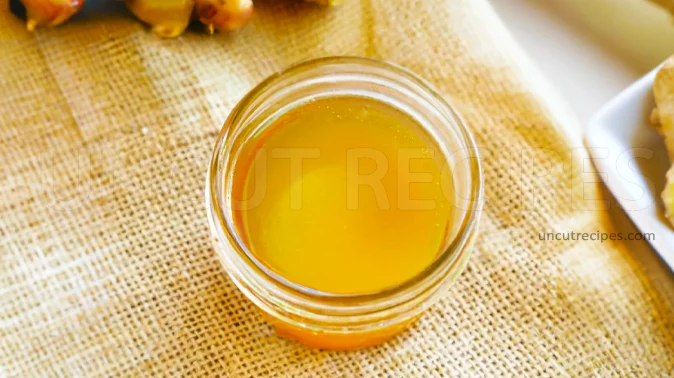
A hustle and bustle in the heart of a lively neighborhood market. Amongst the vendors selling fresh produce, fragrant spices, and handmade crafts, there is one stall that always draws a crowd. The vendor, a friendly face known to the locals, is famous for one thing - his Fresh Ginger Simple Syrup. This seemingly simple concoction has become the secret ingredient to many a home-cooked meal, adding a zesty kick and subtle sweetness that elevates any dish or drink it graces.
The beauty of this recipe lies in its simplicity. With just three ingredients - Sugar, water, and fresh ginger root, you can create a versatile syrup that can be used in a multitude of ways. From adding a gingerly kick to your morning tea, to creating zesty cocktails, or even drizzling over pancakes - the possibilities are endless!
In this step-by-step guide, we will walk you through the process of creating this delightful syrup from scratch. From combining the ingredients, to simmering the syrup, and finally, steeping the ginger to infuse its flavors - we have got you covered.
So, roll up your sleeves and let's get started! This Fresh Ginger Simple Syrup is about to become your new favorite kitchen staple. Whether you are an experienced cook or a beginner in the kitchen, this recipe is foolproof and will surely impress your friends and family. Let the ginger magic begin!
JUMP TO:
INGREDIENTS:
Ginger is the key ingredient for this recipe, and its quality will directly impact the flavor of your syrup. Look for ginger roots that are firm, smooth, and free of mold. The skin should be thin, shiny, and taut. Fresh ginger should have a spicy aroma. Avoid ginger with wrinkled skin, soft spots, or a mildew smell as they are signs of aging or poor storage.
Firmness: Ginger should be firm to the touch. Soft spots or a mushy texture are indicators of age or spoilage.
Smooth Skin: Fresh ginger will have a smooth skin. Wrinkles on the skin usually indicate that the ginger is drying out and becoming old.
Aroma: Fresh ginger should have a strong, spicy aroma. The stronger the smell, the fresher the ginger.
Ginger, or Zingiber officinale, is a flowering plant whose rhizome (underground stem) is widely used as a spice and folk medicine. There are not various 'types' of ginger per se, but rather the ginger plant is grown in different parts of the world, and the climate and soil can affect its taste, size, and appearance. However, the ginger we commonly use in cooking does come in various forms, each with its characteristics.
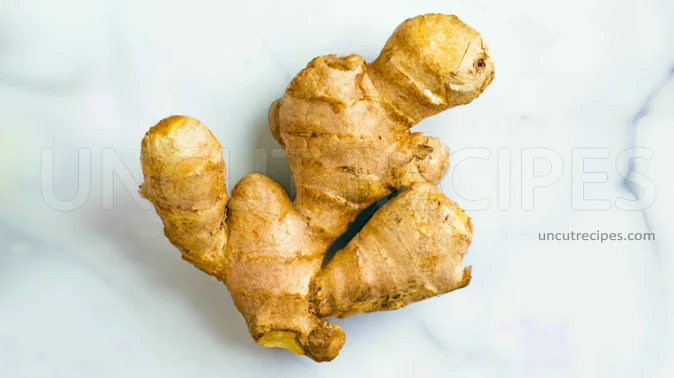
Varieties of Ginger that can be used for Syrup:
- Common Ginger (Zingiber officinale):
Color: Light brown skin with yellow interior.
Taste: Pungent and slightly sweet.
Usage: This is the most common variety found in grocery stores and is used in most recipes that call for fresh ginger.
- Blue Hawaiian Ginger (or Blue Ginger):
Color: Light tan skin with a bluish-green interior.
Taste: Milder and less fibrous compared to common ginger.
Usage: Used similarly to common ginger but is more decorative due to its unique color.
- Galangal (Alpinia galanga):
Color: White with pinkish-brown skin.
Taste: More peppery and piney compared to common ginger.
Usage: Commonly used in Thai, Indonesian, and Malaysian cooking. It is not a direct substitute for common ginger as the flavor is quite different.
- Young Ginger (or Baby Ginger):
Color: Creamy white or slightly pinkish skin with pale yellow interior.
Taste: Milder and less fibrous compared to mature ginger.
Usage: Used in similar ways to common ginger, but is especially good for pickling or candying.
MAIN STEPS:
Ginger Slicing: Slice the ginger thinly to maximize the surface area exposed to the Sugar water, which will help extract the flavors more efficiently. Make sure to remove the skin, as it may contains spores, molds and bacterias.
Simmering Time: Allowing the syrup to simmer for 15 minutes helps to extract the ginger flavors into the syrup. However, be cautious not to over-simmer as it may cause the syrup to become too thick or the ginger to become overcooked, resulting in a bitter taste.
Steeping Time: Leaving the ginger to steep in the syrup after turning off the heat is crucial for developing the flavors, which is very different from simmering. The steeping time can be adjusted according to taste preference. However, it is recommended to steep for at least 1 hour to ensure a well-balanced ginger flavor.
Straining: Strain the syrup properly to remove all the ginger pieces, which will result in a smoother syrup. Additionally, don't press the ginger too hard during straining as it may release unwanted flavors into the syrup.
SERVED WITH:
Starter: Vietnamese Spring Rolls (Vietnam): Fresh spring rolls made with shrimp, herbs, rice vermicelli, and vegetables wrapped in rice paper. The ginger simple syrup can be used in the dipping sauce to add a sweet and spicy kick.
Side Dish: Grilled Pineapple (International): Slices of pineapple grilled until caramelized. Drizzling the ginger simple syrup over the pineapple enhances its sweetness and adds a hint of spice.
Main Course: Teriyaki Chicken (Japan): Chicken marinated in a sauce made with soy sauce, sake, Sugar, and ginger, then grilled or pan-fried. The ginger simple syrup can be used as a substitute for Sugar in the marinade to add a ginger flavor.
Tea: Honey Ginger Tea (Shogayu 生姜湯) (Japan): A soothing Japanese tea made by infusing hot water with freshly grated ginger and sweetened with honey. Elevate this traditional healing beverage by using Fresh Ginger Simple Syrup instead of honey; the syrup not only sweetens the tea but also intensifies the ginger flavor, making it a comforting and aromatic drink perfect for cold days or when you're feeling under the weather.
Cake: Lemon Ginger Pound Cake (USA): A moist and dense pound cake flavored with lemon and ginger. The ginger simple syrup can be used to brush over the cake to add moisture and flavor.
Drink: Ginger Mojito (Cuba): A variation of the classic Mojito made with white rum, lime juice, mint leaves, and ginger simple syrup. The ginger simple syrup adds a sweet and spicy twist to this refreshing cocktail
ALTERNATIVES:
Starter: Ginger Scallion Noodles (China): A popular Chinese dish made with noodles tossed in a sauce made with ginger, scallions, soy sauce, and oil. Adding a dash of ginger simple syrup to the sauce can enhance the sweetness and ginger flavor.
Side Dish: Ginger Roasted Carrots (International): Carrots roasted with ginger, honey, and olive oil until caramelized. Replacing the honey with ginger simple syrup will add an extra layer of ginger flavor.
Main Course: Ginger Soy Glazed Chicken (Korea): Chicken pieces marinated in a mixture of soy sauce, ginger, garlic, and Sugar, then grilled or pan-fried. Substituting the Sugar with ginger simple syrup will enhance the ginger flavor in the marinade.
Second Course: Ginger Garlic Shrimp Stir Fry (Thailand): Shrimp stir-fried with vegetables in a sauce made with soy sauce, ginger, garlic, and Sugar. Using ginger simple syrup instead of Sugar will add a sweet and spicy kick to the sauce.
Dessert: Ginger Infused Panna Cotta (Italy): A creamy Italian dessert infused with ginger and topped with a berry compote. Using ginger simple syrup in the panna cotta mixture and the compote will intensify the ginger flavor.
Cake: Ginger Spice Cake (USA): A moist and flavorful cake made with ginger, cinnamon, and molasses. Drizzling ginger simple syrup over the cake while it's still warm will add moisture and enhance the ginger flavor.
Drink: Ginger Fizz (International): A refreshing drink made with ginger ale, lemon juice, and ginger simple syrup. Adding ginger simple syrup will intensify the ginger flavor and add sweetness to the drink.
HISTORY:
The exact origin of Fresh Ginger Simple Syrup is difficult to pinpoint as both ginger and Sugar have been integral ingredients in various cuisines for centuries. Ginger originated in Southeast Asia and has been used as a spice and medicinal herb for over 5,000 years. It was one of the first spices to be traded on the Silk Road and eventually made its way to Europe and the Americas. Sugar, on the other hand, has been produced in India and China since ancient times and became widely available in Europe during the medieval period.
Ginger syrup, a concoction made from boiling ginger with Sugar and water, has been used in traditional Chinese medicine for centuries as a way to incorporate ginger's medicinal properties into different preparations. However, the recipe and usage have evolved and varied over time and across different cultures.
In Chinese culture, ginger syrup is often used as a base for sweet soups and desserts. For example, it is used in "tangyuan," glutinous rice balls served in a sweet ginger broth. Similarly, in Southeast Asian cuisine, ginger syrup is used in various desserts and beverages.
As cocktails and mixology became more sophisticated, bartenders began to experiment with different syrups and infusions to create unique and flavorful drinks. Fresh Ginger Simple Syrup became a popular ingredient in cocktails as it adds a sweet and spicy flavor that complements a variety of spirits.
The basic recipe for Fresh Ginger Simple Syrup involves boiling fresh ginger with Sugar and water until the Sugar is dissolved and the ginger has infused its flavor into the syrup. However, there are various recipe variations that involve adding other ingredients, such as lemon or lime juice, spices like cardamom or cinnamon, or even herbs like mint or basil, to create a more complex flavor profile.
TIPS:
Sugar-to-Water Ratio: The recipe uses a slightly sweet ratio, but you can adjust it according to your taste. A 2:1 Sugar to water ratio will yield a richer, thicker syrup, while a 1:1 ratio will result in a lighter, less sweet syrup.
Variety of Sugar: Experiment with different types of Sugar. Raw and brown Sugars, for example, can add a different dimension of flavor to the ginger syrup.
Preservation: Add a small amount of citric acid (about 1/4 teaspoon per cup of syrup) to help preserve the syrup for a longer time.
Spice Infusion: Add winter spices like cinnamon, nutmeg, cloves, and allspice along with the ginger to create a warm, spiced syrup perfect for cocktails, hot toddies, or coffee.
Herb and Citrus Infusion: Infuse the syrup with fresh herbs like mint, or citrus zests like lemon or lime for a refreshing twist.
Vanilla Infusion: Add a whole vanilla bean or a teaspoon of pure vanilla extract to the syrup to create a vanilla-ginger simple syrup with a softened ginger flavor.
Chili Pepper Infusion: For a spicy kick, add a whole chili pepper to the simmering syrup. Taste the syrup after 5 minutes and remove the pepper if the heat is to your liking. If not, leave the pepper in for a few more minutes.
- Method for Chili Pepper Infusion:
Add a whole chili pepper to the syrup as it simmers.
Remove the saucepan from the heat after 5 minutes and taste the syrup.
If the pepper infusion is to your liking, remove the pepper and continue the ginger infusion. If not, return the pepper to the saucepan and simmer for a few more minutes before tasting again.
By incorporating these tips and experimenting with your own variations, you can create a gourmet Fresh Ginger Simple Syrup that will add a unique and sophisticated touch to your beverages and dishes.
Recipe Information
Skill Level
|
Time 10 Minutes |
Price
|
Makes 1 to 8 Cups |
| Healthiness |
Nutritional Information |
| Ratings (Add Rating & Review) |
Reviews 08 Reviews |
Ingredients:
-
1 cup Granulated Sugar
0.75 cup Water
1 cup Sliced Fresh Ginger Root
( peeled )
Allergens
| Based on the ingredients of this recipe, there are no common allergens present such as gluten, dairy, eggs, soy, peanuts, tree nuts, fish, shellfish, or sesame. However, if any of the ingredients were processed in a facility that also processes allergens, there could be a risk of cross-contamination. It's always best to check the packaging and labels of each ingredient to make sure there are no allergen warnings. |
Directions:
01 - Start by placing a saucepan on the stove over medium heat. Then, combine the Sugar and Water in the saucepan.
02 - Keep stirring the mixture continuously until all the Sugar has completely dissolved in the water.
03 - Next, add the peeled and sliced Ginger to the saucepan and continue to heat the mixture until it reaches a light boil.
Cooking the Syrup:
04 - Once it starts boiling, cover the saucepan with a lid, reduce the heat to low, and let it simmer for about 15 minutes.
05 - After 15 minutes, turn off the heat and let the Syrup cool down. Leave it to steep in the covered pan for about 1 hour or until it has the taste you prefer.
Finishing Up:
06 - After the Syrup has steeped, strain out the Ginger pieces and transfer the Syrup to a bottle with a tight seal.
07 - Your homemade Fresh Ginger Simple Syrup is now ready to be used! Mix it into your favorite drinks and enjoy the wonderful flavor it adds!
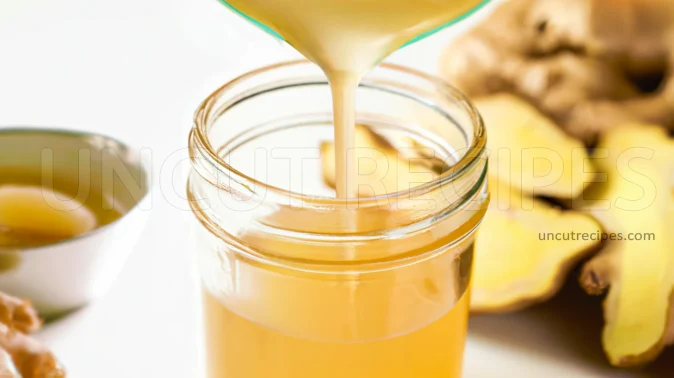
Notes:
Slicing the Ginger: Before starting, make sure to slice the ginger into thin pieces to maximize the surface area exposed to the Sugar-water mixture, which will help in infusing the ginger flavor more effectively.
Cooking the Syrup: It's crucial to keep stirring the mixture continuously until all the Sugar has completely dissolved to avoid any Sugar granules in the final syrup. Covering the saucepan with a lid during simmering helps in retaining the flavors and aroma of the ginger.
Steeping the Syrup: Allowing the syrup to steep for about 1 hour or until it has the taste you prefer is essential for enhancing the ginger flavor in the syrup. However, the steeping time can be adjusted based on personal preference. The longer it steeps, the stronger the ginger flavor will be.
Straining the Syrup: Straining out the ginger pieces is necessary to get a clear syrup. A fine-mesh strainer can be used for this purpose.
Storing the Syrup: Transfer the syrup to a bottle with a tight seal to keep it fresh. The syrup can be stored in the refrigerator for up to 1 month. However, it is recommended to use it within two weeks to ensure the best quality. If you notice little bits of mold, discard the syrup and start over.
Freezing the Syrup: Ginger simple syrup can also be frozen. When frozen in ice cube trays, the syrup will be opaque and firm but still slightly soft. These cubes can be added to club soda, iced tea, or lemonade for a quick and easy flavor boost.
Alternative Ingredients: If you prefer a different level of sweetness, you can adjust the Sugar to water ratio. More Sugar will make a sweeter syrup, and less Sugar will make a less sweet syrup.
Nutritional Information
( Per Portion )
|
Calories |
50 kcal (2.5%) |
| Total Carbohydrate | 13g (5%) |
| Cholesterol | 0mg (0%) |
|
Total Fat |
0g (0%) |
| Saturated Fat | 0g (0%) |
| Polyunsaturated Fat | 0g (0%) |
| Monounsaturated Fat | 0g (0%) |
| Trans Fat | 0g (0%) |
| Fibers | 0.1g (0.4%) |
| Protein | 0.1g (0.2%) |
| Sugar | 12.5g (50%) |
|
Vitamin A |
0 IU (0%) |
|
Vitamin B1 (Thiamin) |
0.002mg (0.17%) |
| Vitamin B2 (Riboflavin) | 0.002mg (0.15%) |
| Vitamin B3 (Niacin) | 0.02mg (0.13%) |
| Vitamin B5 (Pantothenic Acid) | 0.01mg (0.2%) |
| Vitamin B6 | 0.002mg (0.12%) |
| Vitamin B7 (Biotin) | 0.1mcg (0.33%) |
| Vitamin B9 (Folate) | 0.2mcg (0.05%) |
| Vitamin B12 | 0mcg (0%) |
| Vitamin C | 0.1mg (0.11%) |
| Vitamin D | 0 IU (0%) |
| Vitamin E | 0.01mg (0.01%) |
| Vitamin K | 0mcg (0%) |
| Choline | 0.4mg (0.07%) |
| Carnitine | 0mg (0%) |
|
Calcium |
1mg (0.08%) |
|
Chloride |
1mg (0.04%) |
| Chromium | 0mcg (0%) |
| Copper | 0mg (0%) |
| Fluoride | 0mcg (0%) |
| Iodine | 0mcg (0%) |
| Iron | 0.02mg (0.11%) |
| Magnesium | 1mg (0.24%) |
| Manganese | 0mg (0%) |
| Molybdenum | 0mcg (0%) |
| Phosphorus | 0mg (0%) |
| Potassium | 13mg (0.28%) |
| Selenium | 0mcg (0%) |
| Sodium | 1mg (0.04%) |
| Sulfur | 0mg (0%) |
| Zink | 0.01mg (0.09%) |
* Percent Daily Values are based on a 2,000 calorie diet. Your daily values may be higher or lower depending on your calorie needs.
** Nutrient information is available for all ingredients in this recipe. Amount is based on available nutrient data collected from all over the internet.
(-) Information is not currently available for this nutrient. If you are following a medically restrictive diet, please consult your doctor or registered dietitian before preparing this recipe for personal consumption. |
| Written by: Uncut Recipes | Disclaimer |


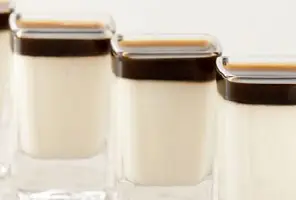
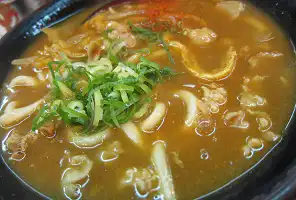
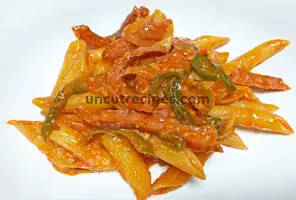
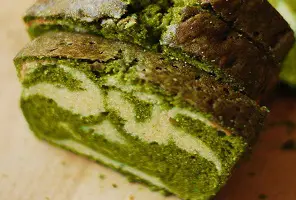
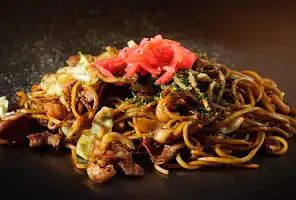
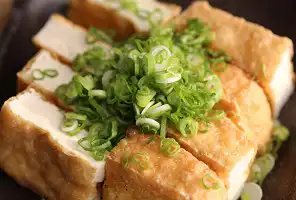
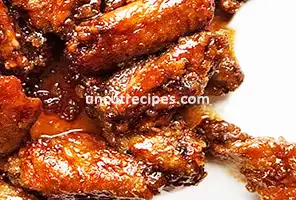

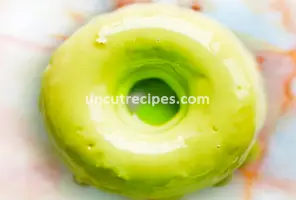
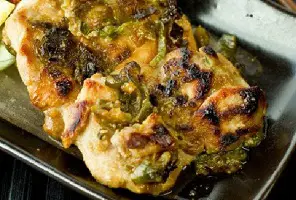
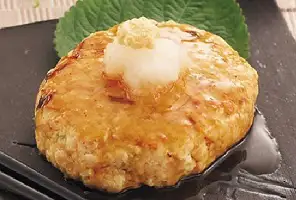

September 16, 2023
I prepared the ginger simple syrup using Argentina Honey, and it turned out to be incredibly tasty. My friends and I enjoyed it with some iced tea during our weekend get-together.